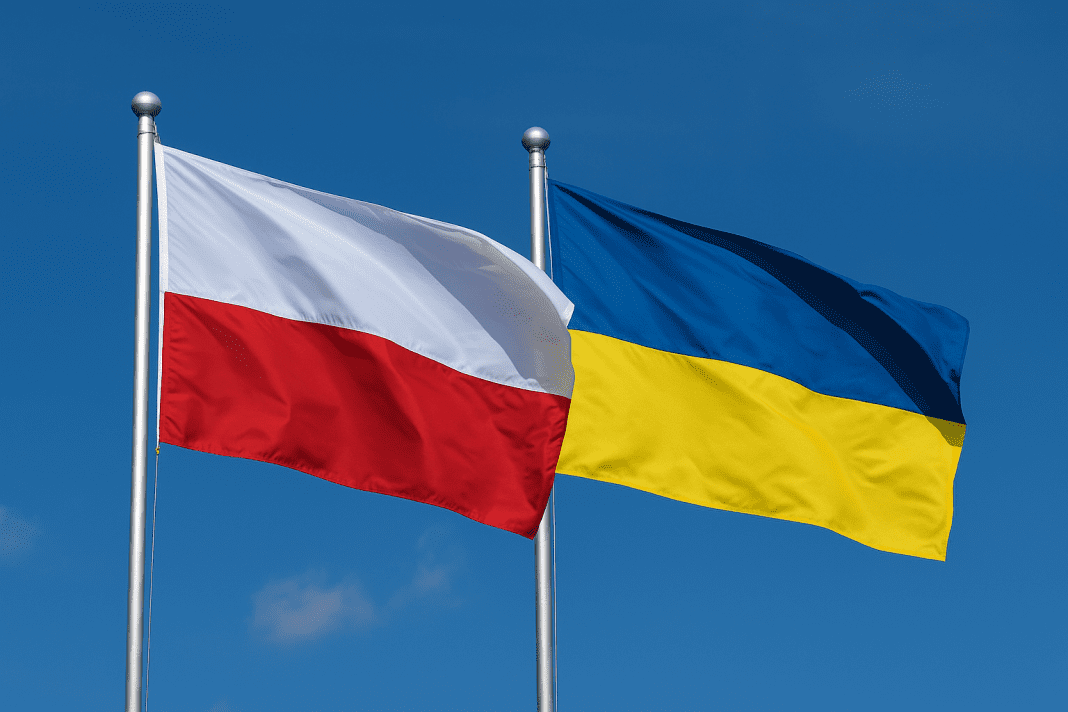Poland has firmly ruled out sending troops to Ukraine, delivering a strong and clear message in the ongoing conflict. Government spokesperson Adam Szlapka explained that Warsaw has no plans to participate in any military coalition, including what has been called the “Coalition of the Willing.” This decision highlights Poland’s cautious approach, prioritizing political support and regional security over direct combat involvement.
Poland Rejects Military Deployment Amid Rising Tensions
Szlapka emphasized that Poland remains committed to a tough stance against Russia. However, he clarified that the country’s support for Ukraine would focus on defensive measures, financial aid, and political backing rather than sending soldiers into the conflict. Poland’s choice reflects the careful balancing act many NATO countries face—supporting Ukraine while avoiding direct military confrontation.
This announcement comes shortly after a meeting at the White House where six European leaders and NATO Secretary-General Jens Stoltenberg met with Ukrainian President Volodymyr Zelensky. The discussions centered on Ukraine’s security and how international allies could help without escalating the conflict.
🪖 Poland shocks NATO with plan for Europe’s biggest land army — force could surge to 500,000
U.S., Poland, and European positions on troop deployment
While Poland opted out of direct engagement, the United States has maintained a clear position. Former President Donald Trump reiterated that Ukraine would not join NATO and dismissed the idea of sending U.S. troops into the conflict. He also claimed that the United Kingdom, France, and Germany were pushing for “boots on the ground” in Ukraine, showing the different approaches within NATO regarding military involvement.
The White House meeting illustrated a divided stance among NATO nations. While most countries expressed political and economic support for Ukraine, the reluctance to commit soldiers highlights the challenges of achieving consensus in an alliance with multiple national priorities. Experts note that Poland’s refusal marks the sixth NATO country to decline sending troops, underlining the limitations of direct military intervention even among allied nations.
🧳 From Libya to Poland — Belarus accused of trafficking migrants in geo-political power play
The hesitancy to deploy troops has led to a focus on alternative support measures. NATO and allied nations continue to provide Ukraine with defensive weaponry, intelligence sharing, and financial assistance. This approach allows countries to support Ukraine’s security without risking a wider escalation or putting troops in direct harm’s way.
Implications of NATO Hesitation
The decision by Poland and other NATO countries not to send troops demonstrates the complexities of international military coordination. Poland’s refusal is particularly significant given its geographical proximity to Ukraine and its historical role as a regional security partner. By avoiding direct combat, Warsaw has emphasized its preference for political and logistical support while managing the risks associated with active military involvement.
NATO Secretary-General Stoltenberg emphasized that discussions on Ukraine’s security remain ongoing, with allies working to strengthen defensive measures and resources for Kyiv. However, direct combat involvement continues to face resistance. These developments show that NATO’s support for Ukraine is strong but carefully measured, balancing solidarity with caution.
🇵🇱 Poland charges Belarusian man in explosive KGB sabotage plot targeting EU infrastructure
Trump’s remarks about European countries advocating troop deployment also highlight internal debates within NATO. While allies agree on the importance of supporting Ukraine, differences in risk assessment and national interest influence each country’s position. Poland’s decision reinforces the message that even key European partners are cautious about entering combat, opting instead for strategies that provide support without direct confrontation.
This growing pattern of NATO hesitation reflects the broader reality of international diplomacy in conflict zones. Countries continue to navigate the delicate balance between showing support for Ukraine and avoiding escalation that could impact Europe’s overall security. Poland’s stance is now a key example of how nations are approaching this balance in practical, measured ways.

